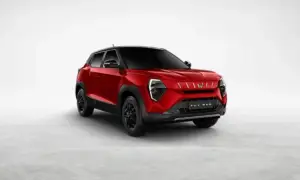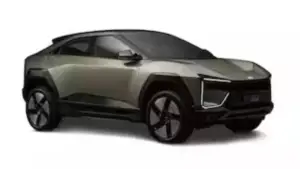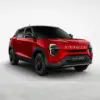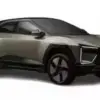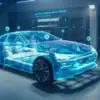As the world seeks sustainable solutions to combat climate change, photovoltaic (PV) technologies are leading the charge in transforming the automotive industry. The integration of advanced solar panels into vehicles has evolved from a futuristic concept to a tangible innovation, making solar-powered mobility a viable solution for eco-conscious consumers.
In 2026, advancements in PV technology are enabling cars to harness the sun’s energy more efficiently, reducing dependence on traditional energy sources and significantly lowering carbon footprints. This post delves into the state-of-the-art advancements in PV technologies and their implications for the future of transportation.
Understanding Photovoltaic Technology in Cars
Photovoltaic technology involves the use of solar panels made from semiconductor materials, typically silicon, which convert sunlight directly into electricity. In cars, these panels are strategically integrated into the vehicle’s body—rooftops, hoods, or even windows—allowing the sun’s energy to supplement or fully power the vehicle’s systems.
Key components include:
- Solar Cells: Modern solar cells, such as monocrystalline and thin-film types, maximize sunlight conversion efficiency.
- Energy Storage: Electricity generated is stored in batteries for powering the vehicle’s motor or auxiliary systems.
- Inverters: Convert DC power from solar panels to AC power for vehicle use.
Major Advancements in Photovoltaic Technologies
- High-Efficiency Solar Cells:
Recent breakthroughs in solar cell technology, such as multi-junction cells and perovskite materials, have pushed efficiency rates to over 30%. This allows vehicles to generate more energy from a smaller surface area. - Flexible and Lightweight Panels:
Flexible solar panels made from thin-film technology can conform to the curved surfaces of a car, increasing the usable area for energy generation without adding significant weight. - Dual-Use Glass Panels:
Transparent photovoltaic glass enables windows and windshields to generate power, providing an additional source of energy without compromising visibility. - Energy-Optimized Systems:
Advanced energy management systems optimize the storage and distribution of solar energy, ensuring maximum efficiency and minimal waste. - Self-Healing Materials:
Self-repairing coatings for solar panels enhance durability and longevity, addressing challenges posed by wear and tear or environmental factors.
Applications of Photovoltaic Technology in Cars
- Battery Supplementation:
PV systems extend the range of electric vehicles by supplementing the main battery, reducing the need for frequent charging. - Auxiliary Power Supply:
Solar panels can power auxiliary systems like air conditioning, infotainment, and lighting, lowering the vehicle’s overall energy consumption. - Off-Grid Mobility:
Solar-powered cars are ideal for remote or off-grid areas where charging infrastructure is sparse. - Smart Integration with Charging Systems:
Many solar-enabled cars integrate seamlessly with home solar setups, allowing excess energy to be fed back into the grid.
Examples of Photovoltaic-Integrated Vehicles
- Lightyear 2:
This solar-electric car boasts a range of up to 800 kilometers, with 40-60 kilometers per day provided by its solar panels. - Hyundai Sonata Hybrid:
Hyundai’s hybrid vehicle incorporates a solar roof that can add up to 1,300 kilometers of annual driving range. - Aptera Solar Car:
Aptera’s futuristic design relies heavily on solar energy, offering an impressive range of up to 1,600 kilometers on a full charge with solar assistance.
Benefits of Advancements in Photovoltaic Technology
- Sustainability:
PV technology reduces reliance on fossil fuels, lowering greenhouse gas emissions and combating climate change. - Energy Independence:
Drivers can generate their own power, reducing dependency on charging stations and traditional energy grids. - Cost Efficiency:
With minimal operating costs and reduced reliance on external energy sources, solar-powered vehicles offer long-term savings. - Enhanced Vehicle Lifespan:
Self-healing panels and durable materials improve the lifespan of PV systems, providing lasting value.
Challenges and Solutions
- Efficiency Limits:
Current solar cells still lose significant energy during conversion. Advancements like perovskite-silicon tandem cells are addressing this limitation. - Weather Dependence:
Solar energy generation can be inconsistent in cloudy or rainy regions. Battery storage and hybrid systems help mitigate this issue. - High Initial Costs:
While the upfront cost of PV integration is high, economies of scale and technological advancements are making these systems more affordable.
Future Trends in Photovoltaic Technologies for Cars
- Increased Adoption of Perovskite Solar Cells:
Perovskite cells promise higher efficiency and lower production costs compared to traditional silicon-based cells. - Integrated Solar-Body Designs:
Vehicle designs are increasingly incorporating solar panels into their aesthetics, blending functionality with style. - AI-Driven Optimization:
Artificial intelligence will play a crucial role in optimizing energy management systems for solar cars, ensuring maximum utilization of solar energy. - Expansion of Solar Infrastructure:
As governments invest in renewable energy, public solar charging stations will become more common, supporting solar-powered vehicles.
Conclusion
Advancements in photovoltaic technologies are not just an upgrade; they are a revolution for the automotive industry. Solar-powered cars equipped with cutting-edge PV systems are setting new benchmarks for sustainability, efficiency, and energy independence.
With continuous innovation, photovoltaic technology will play a central role in reducing the environmental impact of transportation and steering the world toward a greener future.




